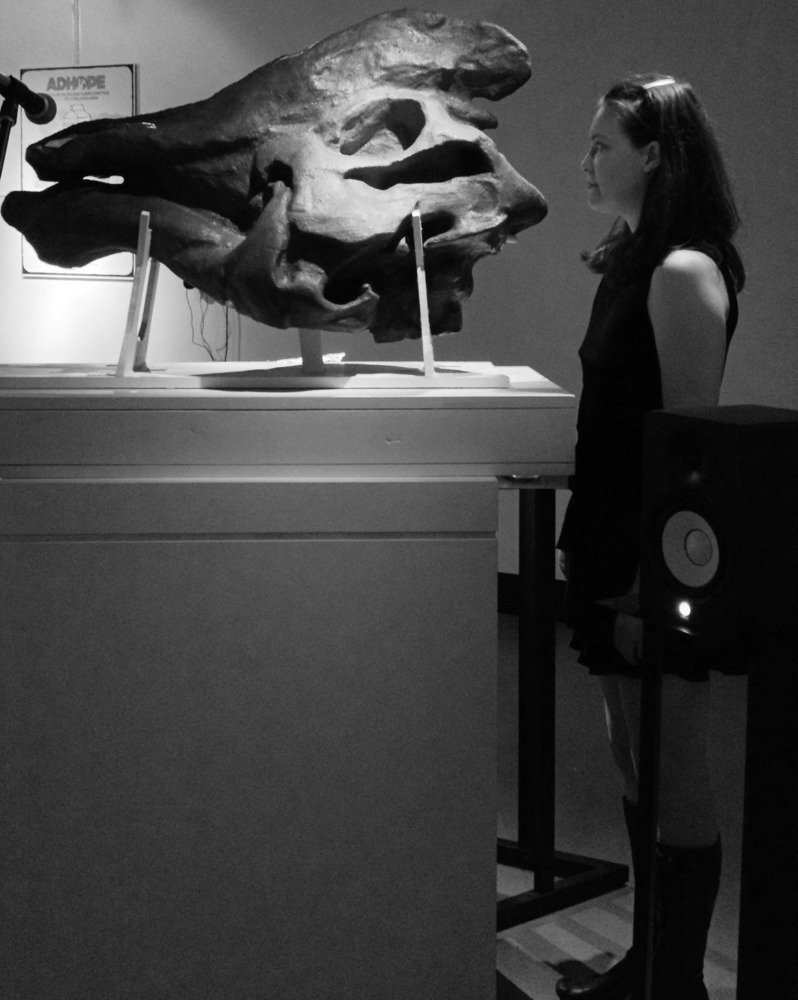
HADROSAUR VARIATIONS
first performed on November 20, 2021
Pollock Gallery, Dallas, TX
performed once in 2021
COURTNEY BROWN
Dallas, TX
639008555b639008555r639008555o639008555w639008555n639008555c639008555d639008555@639008555s639008555m639008555u639008555.639008555e639008555d639008555u
courtney-brown.net
HADROSAUR VARIATIONS
COURTNEY BROWN
“Hadrosaur Variations” is a structured improvisation for hadrosaur skull instrument (Rawr!), soprano (myself), and laptop. A Corythosaurus is a duck-billed dinosaur, a lambeosaurine hadrosaur that scientists hypothesize used its large head crest for sound resonation. Rawr! is a musical instrument created from a replica of a subadult Corythosaurus skull and nasal passages. I give voice to this instrument by blowing into a mouthpiece, exciting a larynx mechanism and resonating the sound through the dinosaur’s nasal cavities and skull.
While science is one way of knowing the world, “Hadrosaur Variations,” Rawr!, and my ongoing dinosaur vocalization work explore how a musical instrument can also produce knowledge. In a sense, I become the dinosaur. My lungs provide the power of its call. I do not only see how large this dinosaur is in comparison to myself. I feel it inside my body.I know the dinosaur sound not only via incorporeal simulation and data, but also via my body’s effort, tension, and delicate maneuverings to produce the dinosaur’s varied utterances.
The “Hadrosaur Variations” 2021 premiere began with my previous short work, “Things That Breathe.” Whale, bird, and jungle sounds are processed live by the computer to create rhythms. My voice distorts and reorganizes the animal voices as I sing, “I keep talking to machines instead of things that breathe” over and over. I use the hadrosaur skull instrument to contribute to the rhythmic complexity, juxtaposing the digital and the physical. Eventually, the disembodied animal sounds from the computer end and give way to a human and dinosaur duet created by recording and looping the voices. I use thin balloons to mimic elastic vocal folds of the larynx. During performance, I both stretch, pull, and fold these balloons manually and use my breath to change timbre (sound quality) and pitch (sounding note).
The hadrosaur skull instrument (Rawr!) used in my performance was created in collaboration with Sharif Razzaque. I also acknowledge Garth Paine, Carlo Sammarco, Sallye Coyle, Brent Brimhall and Gordon Bergfors for their contributions and funding from Arizona State University GPSA. CT skull scans were provided by Witmer Labs, Ohio University.